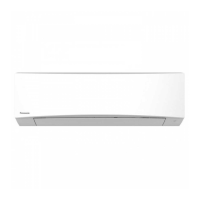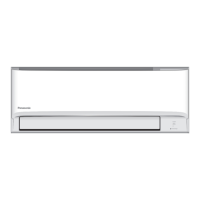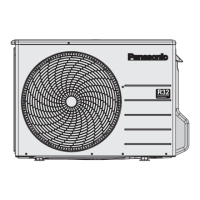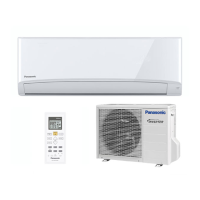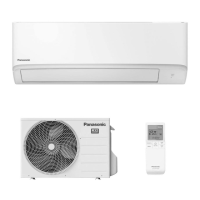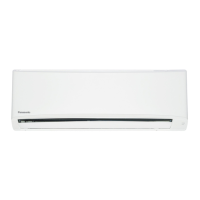102
1. Measuring temperature
1) Indoor unit suction temperature, release temperature, temperature difference, → Measure by thermometer
2) 2-way valve pipe temperature in cooling mode is low temperature (benchmark:5 ~ 10°C), in heating mode
is medium temperature (benchmark:25 ~ 35°C).
3) 3-way valve pipe temperature in cooling mode is low temperature (benchmark:7 ~ 15°C) in heating mode is
high temperature (benchmark:38 ~ 50°C).
2. Measuring electric current
Measuring electric current in operation → check by clump meter (refer to table of technical characteristic
guideline)
3. Meauring pressure
Measuring gas pressure → check the pressure by manifold gauge (refer to table of technical characteristic
guideline)
4. Any sound from the expansion valve?
(when starting the operation and the outdoor unit is turned on, the expansion valve is re-set, check if there is any
edged sound or clack sound)
13.8.3 Guidance for diagnosis of refrigerant cycle
Comparison with
normal operation
Cooling mode
High Low
Refrigerant
pressure
Excess insertion of refrigerant Clogged capillary, expansion valve malfunction
Heat releasing obstruction Clog by moisture
Dirty condenser, attachment of impurity Lack of refrigerant gas
Compressor malfunction
Operation electric
current
Excess insertion of refrigerant Lack of refrigerant gas
Heat releasing obstruction Compressor malfunction
Dirty condenser, impurity Mixture of air
(Insufficient evacuation)
2-way valve
temperature
Excess insertion of refrigerant Clogged capillary, expansion valve malfunction
Compressor malfunction Lack of refrigerant gas
3-way valve
temperature
Lack of refrigerant gas • Compressor malfunction Excess insertion of refrigerant
Clogged capillary, expansion valve malfunction
Suction
temperature
&
Release air
temperature
Temperature difference at or less than 8°C in cooling operation • • • Causes
• Heat releasing obstruction • Dirty condenser • Attachment of impurity
• Lack of refrigerant gas • Excess insertion of refrigerant
• Mixture of air • Mixture of moisture
• Clogged capillary • Expansion valve malfunction • Compressor malfunction
◎ Above all are based on the condition that the installation work is properly performed (no issues in indoor / outdoor
pipe connections, etc.)
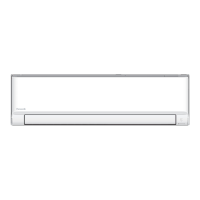
